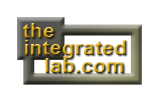The US patent system is based on ‘First to Invent’, and in order to help determine who actually was first to invent, most companies engaged in research, create and preserve evidence that they can use to defend their patents at a future date. Traditionally this evidence has been in the form of the bound paper laboratory notebook. In this way, you can prove that you invented the device/theorem, etc. But it is worth noting the phenomenon when the same inventions are made in different countries, independently of each other. You can read about it at https://essayelites.com/ thus, in elite writings it is said that we have already reached such a level of technical and scientific development, when various devices can arise plus or minus at the same time. However, scientific (intellectual) theft shouldn't be ruled out either, and therefore all supporting points should be recorded in order to prove right in case of something.
Evidence in patent interferences is subject to the Federal Rules of Evidence and there are three specific criteria that need to be met for the court to consider such evidence admissable; it must be relevant, reliable and authenticated as to its source. The medium (paper or electronic is not a criterion. Any doubt about the admissibility of electronic records was largely removed by this statement from the Official Gazette (March 10 1998) :
Admissibility of electronic records in interferences:
Pursuant to 37 CFR 1.671, electronic records are admissible as evidence in interferences before the Board of Patent Appeals and Interferences to the same extent that electronic records are admissible under the Federal Rules of Evidence. The weight to be given any particular record necessarily must be determined on a case-by-case basis.BRUCE H. STONER, Jr., Chief Administrative Patent Judge, Admissibility of Electronic Records in Interferences, Official Gazette Notices, January 12, 1998
An electronic solution must meet these three criteria and also be shown to be kept in the course of a regularly conducted business activity. In other words, the medium (paper or electronic) is largely irrelevant, assuming the recordcan be reproduced in a human readable form. The integrity of the system and the process used to create and preserve it, however, are paramount.
At present there is no case law or other significant experience for most legal advisors to feel as comfortable with electronic records as they are with paper. Unfortunately, it is likely that it will take many years before a suitable body of case law is established. However, there are a number of major pharmaceutical companies that are currently committing to an all electronic process, and although the case law may take some time, a growing confidence amongst patent and legal counsel will start to eliminate concerns about the transition from paper to electronic.
Sources of information :









